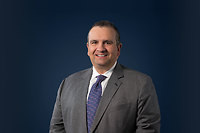Treating surgeons will often tell us that the “gold standard” for evaluating the presence of a surgical condition is any procedure where a physician can visualize the joint, disc space or connective tissue. Yet, far too often decisions regarding the compensability of surgical conditions are left to diagnostic images. The Ohio Supreme Court tackled this issue recently and provided guidance to ensure that employers are only paying benefits for surgically confirmed conditions.
In State ex rel., Neitzelt v. Indus. Comm., Slip Opinion No. 2020-Ohio-1453, the injured worker requested the allowance of her claim for a herniated disc at L4-5. The motion itself was based upon an MRI. The examining experts disagreed whether the findings at L4-5 were related to the claim. The claim was ultimately allowed for a herniated disc at L4-5, and the employer did not appeal that allowance to the Common Pleas Court. Two years later Ms. Neitzelt underwent surgery for the allowed herniated disc.
When the operative report was produced the employer filed a motion for continuing jurisdiction under ORC §4123.52 to vacate the allowance of the L4-5 herniated disc. The basis for the motion was the fact that the surgeon found no evidence of a herniated disc at L4-5. Instead, the surgeon found and proceeded to correct problems at levels adjacent to L4-5. At hearing the Commission granted the employer’s motion and denied the claim for the L4-5 herniated disc.
In a mandamus challenge filed by Ms. Neitzelt, the Tenth District Court of Appeals found in her favor. In ordering the Commission to vacate it’s finding the court concluded that the Commission’s continuing jurisdiction ceased after the statutory sixty-day appeal period had lapsed. On appeal to the Ohio Supreme Court the Commission’s decision was reinstated and upheld.
In explaining their decision the Supreme Court began by reiterating that the exercise of continuing jurisdiction is appropriate when there is evidence of (1) new and changed circumstances, (2) fraud, (3) clear mistake of fact, (4) clear mistake of law, or (5) error by an inferior tribunal. The court also noted two additional criteria; the exercise of continuing jurisdiction must take place within a reasonable period of time, and the fact that the Commission is divested of authority to disturb a prior decision when a party has filed a court appeal to that decision. Importantly, in addressing the appeal criterion, the court found that the employer’s decision to forego a court appeal to the additional allowance was not a bar to the exercise of continuing jurisdiction.
Neitzelt provides a fact specific yet cost-effective alternative to challenging an additional allowance in the Court of Common Pleas. Specific instances where this case can be used in lieu of a right to participate appeal include instances like Neitzelt where the condition does not exist, those cases where a C-9 was improperly completed, and those where a condition was allowed in a claim based on clinical findings alone because the employee was not medically eligible to undergo an MRI or CT scan. Now, if all the conditions for continuing jurisdiction have been met, employers are able to correct administrative decisions that were based on evidence at the time that did not provide an accurate picture of the internal structures of the body. Keeping Neitzelt as a part of your risk management toolbox will therefore ensure that your net claim losses remain golden.
Should you wish for a copy of Neitzelt, or need assistance on this or any other matter, please do not hesitate to reach out to any member of our Workers’ Compensation Practice Group.
This has been prepared for informational purposes only. It does not contain legal advice or legal opinion and should not be relied upon for individual situations. Nothing herein creates an attorney-client relationship between the Reader and Reminger. The information in this document is subject to change and the Reader should not rely on the statements in this document without first consulting legal counsel.
THIS IS AN ADVERTISEMENT
Attorneys
- Columbus
- Cleveland
- Cincinnati
- Toledo
- Youngstown





